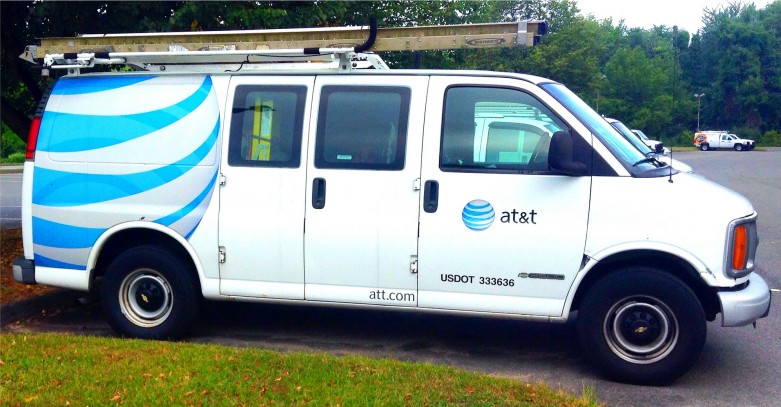
Is AT&T Discriminating Against Low-Income Communities in Cleveland?
The National Digital Inclusion Alliance and Connect Your Community have released some more striking evidence of digital redlining in Cleveland. The data-mapping analysis in their new report strongly suggests that “AT&T has systematically discriminated against lower-income Cleveland neighborhoods in its deployment of home internet and video technologies over the past decade.”
Specifically, AT&T has withheld important fiber upgrades from more impoverished areas of Cleveland, leaving low-income communities with outdated technology and severely restricted broadband speeds of below 3 mbps.
This pattern becomes disturbingly clear in the context of the report’s broader mapping analysis. Marked in red are census blocks where at least 35 percent of the population lives below the poverty line. Marked in light green are census blocks where AT&T offers fiber-to-the-node (FTTN) service of 18 mbps or more. Areas of overlap are few and far between.

While suburban communities and middle-income neighborhoods within the city of Cleveland receive ample coverage from AT&T’s fiber-enhanced services, the report notes that there is a “glaring correlation between areas where AT&T has not invested in FTTN service and areas of high poverty.”
AT&T’s failure to invest in these areas is particularly galling in light of the company’s successful lobbying of the Ohio General Assembly to eliminate cable-franchising requirements in 2007. The company promised massive investment in fiber technology so long as the legislature lifted the standard requirement that AT&T serve 100 percent of its service territories.
AT&T promised not to abuse this regulatory freedom to cherry-pick wealthy communities to upgrade — but it seems to have spent the ensuing years doing exactly that.
To top it off, AT&T’s apparent digital redlining of low-income communities doesn’t just relegate some folks to slower speeds: It also has serious financial consequences. AT&T began offering a low-cost broadband program called “Access from AT&T” as a condition of its merger with DirecTV. Thousands of Cleveland residents who qualify for AT&T’s low-cost broadband program have been told they aren’t eligible for that discounted service because their homes don’t receive the threshold download speed of 3 mbps.
In other words, AT&T’s network is too slow to qualify for the low-cost broadband-pricing program that AT&T itself promised. The company chose not to deploy fiber technologies to poor communities. Now it’s punishing those same communities for its own decisions by requiring struggling families to pay full price for internet-access speeds that don’t meet AT&T’s minimum standards.
Free Press’ Digital Denied report demonstrates how too many families are stranded on the wrong side of the digital divide due to exorbitant broadband prices, problematic credit-check practices and systemic racial bias in the industry and society at large. In a city like Cleveland where 50 percent of the residents are Black, 10 percent are Latino and nearly 35 percent live below the poverty line, the evidence of AT&T’s redlining is, unfortunately, not surprising. As our research shows, communities with lower incomes and higher percentages of people of color tend to have fewer broadband providers, slower speeds and less advanced broadband deployment than wealthier communities with greater numbers of White residents.
The report from the National Digital Inclusion Alliance and Connect Your Community offers further proof that companies like AT&T won’t bridge the digital divide if left to their own devices. Removing the so-called “regulatory burdens” that Trump and FCC Chairman Ajit Pai bemoan will only entrench the systemic inequalities that have kept low-income families and people of color offline.
Instead, we must pursue policies that counter these discriminatory practices and ensure critical internet access is affordable for every community. We can’t do that without defending independent agencies like the FCC from the Trump administration’s attempts to dismantle them from the inside.
AT&T is compounding the injury of its deployment decisions by denying affordable access to the same communities it’s chosen to leave behind. Read the full report on AT&T’s digital redlining of Cleveland here.
Original photo by Flickr user Mike Mozart